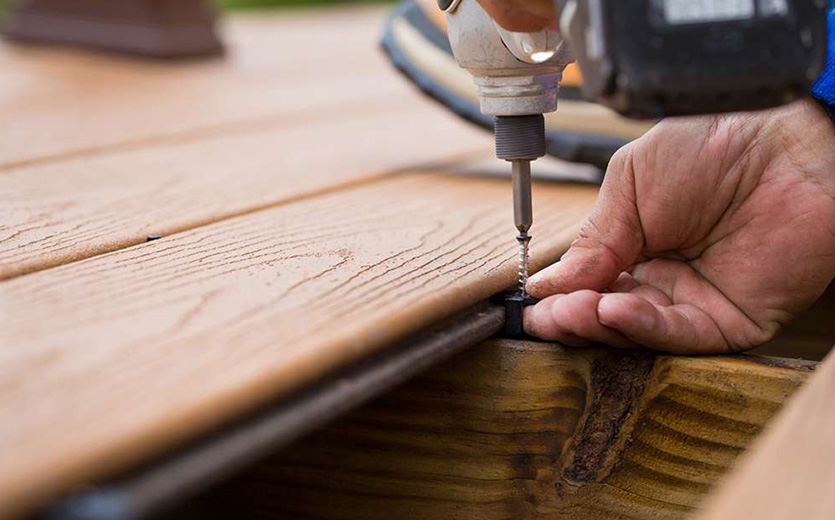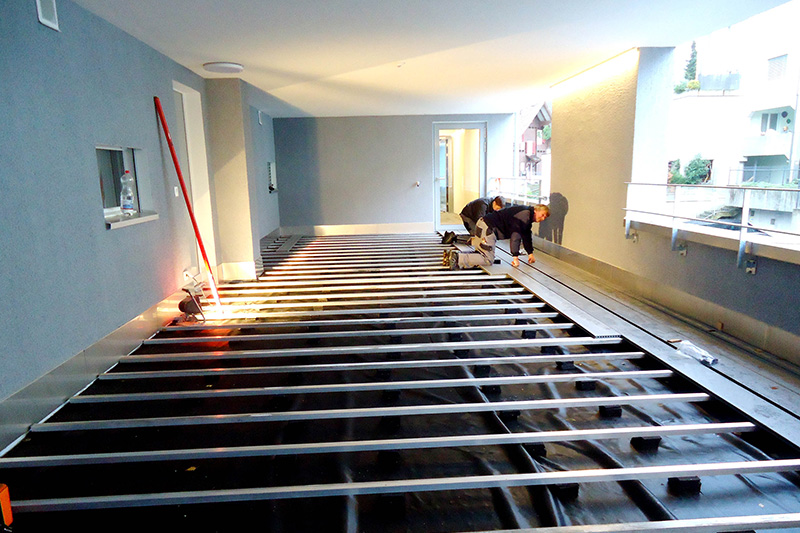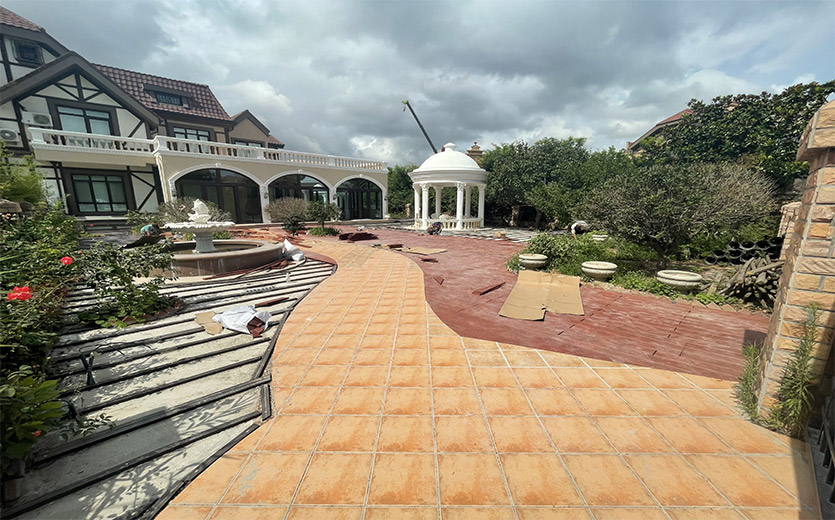
In this article, we’ve compiled some of the most frequently asked questions. For easy access, we’ve arranged these questions into three categories: WPC Product, Installation, and Maintenance of Composite Decking. In this article, we focus on commonly asked questions regarding the installation of WPC products.
Can I build my deck directly over an existing deck?
No. Our composite decking can install on a code-compliant substructure that allows for adequate drainage, ventilation, contraction, and expansion. Old decks must be removed before installing our decking.
Can your composite decking be installed over an existing substructure(framing)?
A: Yes, as long as the substructure meets the requirements as follows:
- It is in a workable condition, free of any damage or decay.
- It meets the code with proper joist spacing to ensure good ventilation and drainage(see Installation Guide for our spacing requirements)
Can I build a fire pit on your composite deck?
We suggest using caution while doing that. Although our composite decking is fire-resistant, excessive heat or shooting embers can still cause some damage to the decking surface. We recommend protective fire-resistant material be used for insulation when placing a fire pit on our deck.
Can I paint or stain your WPC product?
No, we advise against it. Here’s the reason:
- You simply don’t need it. Unlike timber, WPC material is made highly resistant to any rot, mold, and termite damage, which means you’re free of the hassle of treating it every year. Plus, we offer a variety of colors, and bespoke service is available to make any of your ideas come to life.
- The paint won’t adhere well to the WPC material. We can not assure the aesthetic and performance of our WPC products after painting and staining.
- It may void your warranty.
Can I use your WPC products as structural members?
No, our WPC products are not designed to be used as load-bearing members. There’s no composite material that’s approved to be used as structural materials in the global market.
Does your composite decking require pre-drilling to install?
Installed with clips, our composite decking offers a neat finish with no visible fixings, so it doesn’t require much drilling. Whenscrew fixing is employed, pre-drilling pilot holes are necessary in order to achieve neat fixings and avoid possible damage to joists and WPC products.

What type of tools are required to install your composite product?
Just standard woodworking tools would work fine with our composite product. These are what you usually need during installation: A cutting saw, electric drill, electric hammer, rubber hammer, level, and tape measure.
I have a wood deck and want to replace some boards. Can I replace them with composite boards?
Yes, but we would not recommend doing that. Wood boards mixed with composite boards may affect the overall aesthetic of the decking, and, before doing that, always check if the substructure meets the code for composite decking.
Is it okay to install your composite decking around a pool?
Yes, our composite decking performs well around a pool. Here are some points you need to look at:
- Avoid corrosive detergents on the decking.
- Proper ventilation and drainage should ensure in such environments.
- Be sure to use the accessories provided for our decking, they’re highly resistant to rust and corrosion.
Can I install your WPC products near saltwater?
Yes. Saltwater won’t affect the performance of our WPC material. In addition, we also provide 316 stainless accessories that perform well under highly corrosive conditions.
Can your WPC products be installed at any temperature?
Yes, our WPC products are adaptable to violent temperature swings. Please take expansion and contraction into consideration while working on the gaping between adjacent boards at extreme temperatures. You can find the suggestion on gaping at different temperatures in our Installation Guide.
Can your composite decking be directly placed on a solid surface?
No, it cannot. Our composite decking should be installed on a code-compliant substructure that allows for adequate ventilation, drainage, contraction, and expansion, and the ground it’s laid on must be flat and solid.
Can I install my composite boards without spacing?
No, you cannot. Our composite boards must be properly spaced to allow for water drainage, ventilation, contraction, and expansion. Never ever hold boards tight against each other as damage to the edge might result.
Can I install your WPC product myself or do I need to hire a contractor?
Either can work, it depends. We’ve made the installation as easy as possible and provide a range of handy installation guides at your disposal. So it won’t take much energy and time to get it done by yourself. Consult your local building code inspector before doing that. However, if you’re not confident about your woodworking skills, please consult your local contractor.

How do you cover the ends and grooved edges of composite boards?
Depending on your preference, we offer an L-corner or fascia for covering. Some people would trim the decking boards and bring them up to level with the decking to hide the ends, that’s another simple way to deal with it.
Can I install your WPC product with another manufacturer’s accessories?
No, you cannot. The accessories provided are specifically designed for our WPC products. Use of other manufacturers’ accessories probably won’t result in satisfactory installation and will void your warranty.
What type of fasteners and nails are recommended with your composite decking?
It depends on which line of products you’re purchasing. Above all, composite boards with different designs are equipped with different accessories to ensure satisfactory fastening. Consult our sales representatives for more information.
Can I use glue or caulk with your composite boards?
No. Do not use caulk to fasten our composite boards or seal between any of our boards. It will impede drainage and inhibit natural expansion and contraction.
What type of material should I use for the substructure of your composite decking?
So, depending on your needs, we recommend pressure-treated lumber, composite material, or metal as the material for the substructure.
What is the spacing for your stair stringers?
The minimum spacing is 915 mm, and it also depends on which model of composite boards you’re installing. Consult the local building code officials or contact our sales representatives for more information.
What’s fascia and how do I install them?
In other words, fascia is a thinner version of composite decking boards, used to cover the ends of joists and decking boards for aesthetic purposes. So, please refer to the Installation Guide for more information.
Can I overhang composite decking over the edge of my joist?
Yes, you can. Our composite decking may overhang the outer rim joists, but the overhang should not exceed 13 mm(0.51”).
How do I install your WPC product?
Installation guides and videos for each model are available on our website, you can also follow us on YouTube for more information. Prior to installation, it is recommended that you check with local building codes for any special requirements or restrictions.
Can I install multiple colors of the same product together?
Yes. Color combinations can have to bring a unique and interesting look to your outdoor space. You can also use decking boards of a different color to mark the designated zones and places in your yard.
How many clips do I need to install your composite decking?
Therefore, it depends on the width of your decking boards. For instance, with decking boards 150 mm in width, it takes 21 clips to make an area of 1 m2 covered.




Post a Comment